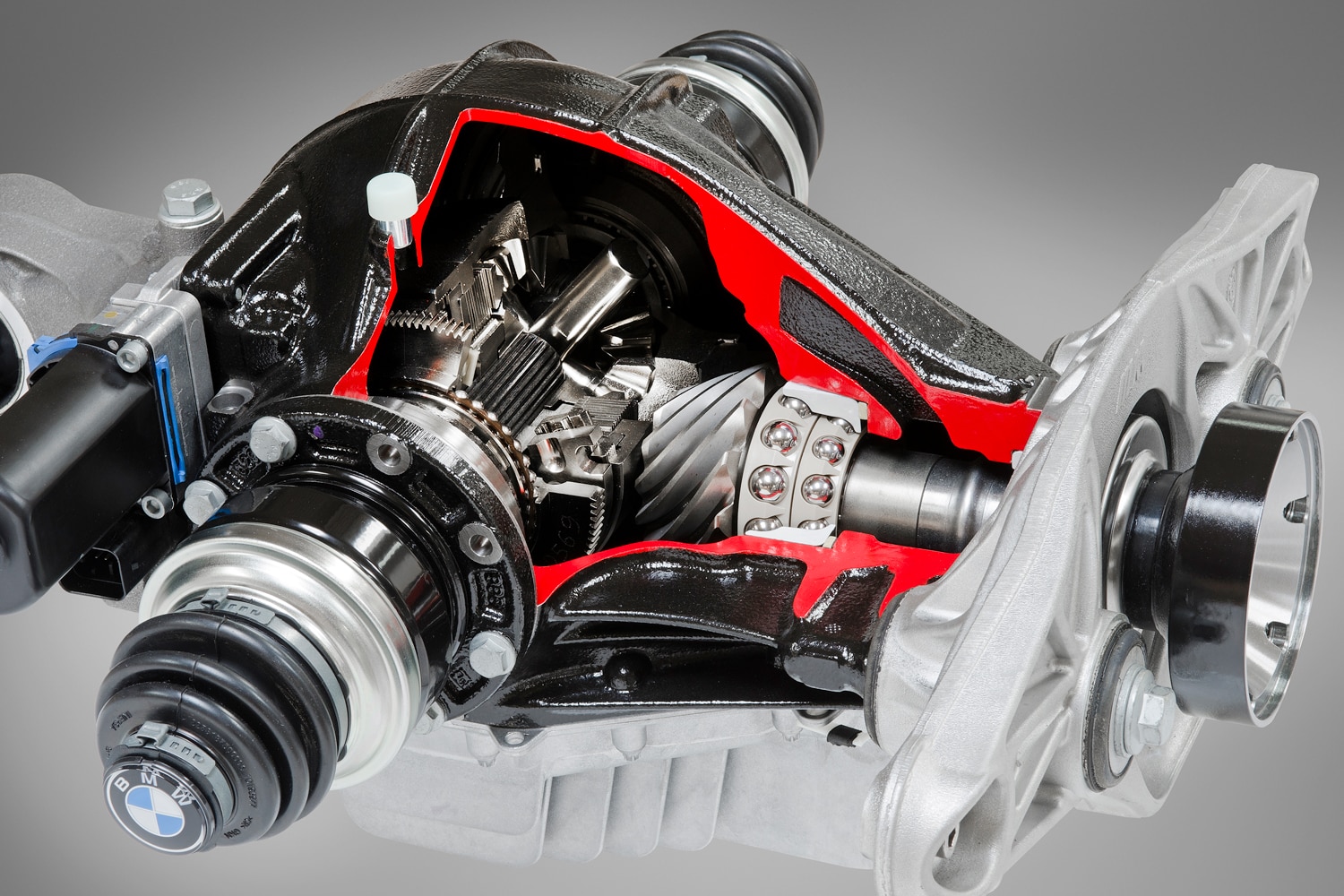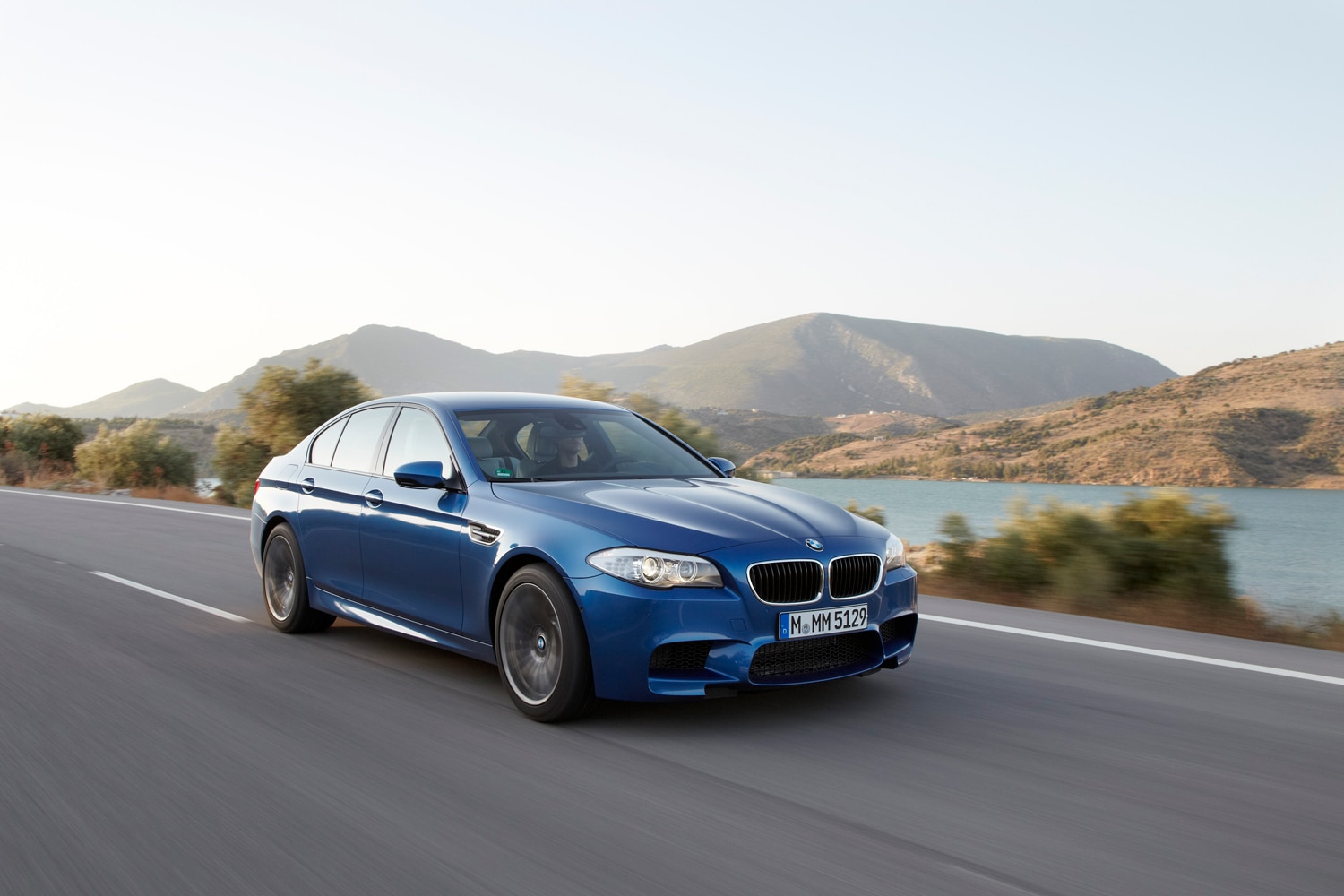What Is a Limited-Slip Differential?
It's what helps your car get the power to the ground instead of spinning its wheels.
 BMW
BMW
A limited-slip differential, often shortened to LSD, is a traction aid that ensures that a tire on a low-grip surface won't spin uselessly. This primer describes what the most basic differential does as well as why you might care about slip and how an LSD goes about limiting it.
What is a Limited-Slip Differential?
A limited-slip differential is the part of a car that takes torque from a vehicle’s transmission and splits it up between the wheels. Though all cars have a differential, only some have a “limited-slip” differential, which is the difference between being able to keep, or even have, traction when conditions are slippery, such as in mud, rain, or snow and ice.
To back up a little bit, a differential allows a car’s wheels to rotate at different speeds—particularly important when you go to turn the car. Here's why: As you make a turn, the outside wheels of the car have to travel a slightly longer distance than the inside wheels. Without a differential, the car would buck or skitter along the pavement as you tried to do this. But with it, the outside drive wheel(s) can rotate at a quicker rate than the inside one(s) to keep pace. This type of differential—the most basic and widely used form—is called an open differential. An LSD improves on this concept by also limiting slip.
How Does a Limited-Slip Differential Work?
Until slippage occurs, the LSD will act like an open differential, allowing the drive wheels to rotate at different speeds. When a certain amount of slip does happen, an LSD (aka an anti-spin differential) senses it—mechanically or electronically, as a difference in wheel torque or speed—and then curtails it, linking the wheels by some means, such as with a clutch, viscous coupling, or pressure between the gears and housing.
What Is Slip, and Why Should I Care About It?
Slip is what happens when a tire loses grip with the road. Let’s consider a two-wheel-drive car: When one drive wheel has traction and the other doesn’t, the former will remain stationary while the latter spins and spins looking for grip. You may have experienced this when trying to take off from a stop and pressing the accelerator pedal a little too hard, the tires spinning and then chirping as they regain traction. It’s common on wet or icy surfaces and when one wheel is on dry pavement and the other is on dirt or ice.
Grip is more often a concern with performance and off-road vehicles than moderately powered, mainstream cars. That's due in part to torquey engines, which tend to test the limits of tire grip, and partly due to how these types of vehicles are used. Sports cars and supercars are more likely to be driven hard and off-roaders commonly lift a wheel off the ground.
On pavement, then, if you attempt to accelerate with a slipping wheel, you'll likely see a whole bunch of tire smoke and no movement. During cornering, when the outside tires have more weight on them than the inside, the unloaded drive wheel will want to spin freely. And an off-roader with open differentials wouldn’t go anywhere without help if it had just one wheel firmly on the ground and others mired in loose mud or sand or hanging in mid-air.
Is It a Problem If My Car Doesn’t Have a Limited-Slip Differential?
Not necessarily. Many modern vehicles have a traction-control system that can avoid slip pretty well by applying the brakes to slow a spinning wheel, which allows the other wheel on the same axle to use its grip to move the vehicle. An LSD is, however, a more efficient way to turn an engine’s torque into forward motion. You don’t need to be an engineer to understand that using the brakes to help a vehicle accelerate has some drawbacks. This is why specialty models use LSDs.
 BMW
BMW
In most cases, any vehicle that needs or would greatly benefit from an LSD will have one or at least allow you to add it as an option. For instance, the 2013 BMW M5 came with an active differential, which is one of the more sophisticated ways of limiting slip. That differential, which is pictured at the beginning of this primer, helps the turbocharged sedan turn 560 hp into forward momentum. Most pickup trucks, on the other hand, have an open differential as standard equipment and include limited-slip or locking diffs on the options list.
Written by humans.
Edited by humans.
 David Gluckman
David GluckmanDavid Gluckman has over a decade of experience as a writer and editor for print and digital automotive publications. He can parallel park a school bus, has a spreadsheet listing every vehicle he’s ever tested, and once drove a Lincoln Town Car 63 mph in reverse. When David’s not searching for the perfect used car, you can find him sampling the latest gimmicky foodstuffs that America has to offer.
Related articles
View more related articles